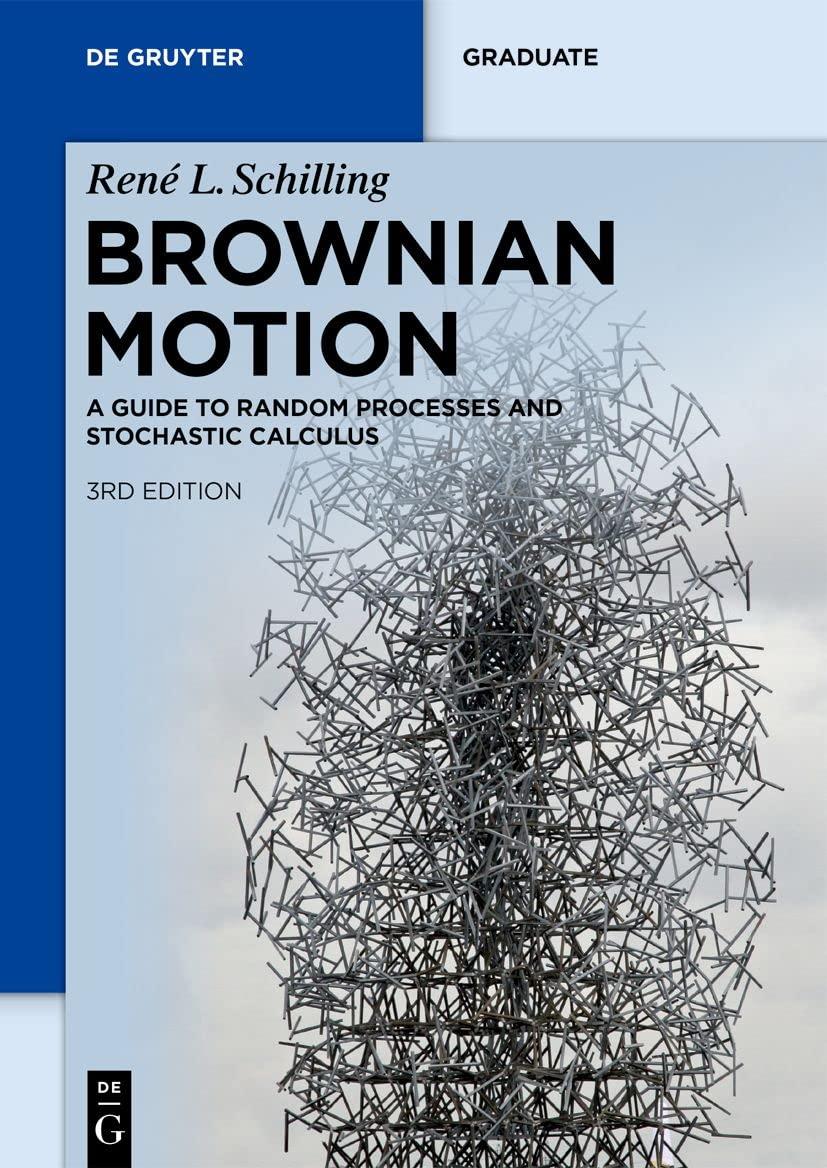This exercise contains a recipe how to obtain polynomial martingales with leading term (B_{t}^{n}), where (left(B_{t}, mathscr{F}_{t}ight)_{t
Question:
This exercise contains a recipe how to obtain "polynomial" martingales with leading term \(B_{t}^{n}\), where \(\left(B_{t}, \mathscr{F}_{t}ight)_{t \geqslant 0}\) is a \(\mathrm{BM}^{1}\).
a) We know that \(M_{t}^{\xi}:=\exp \left(\xi B_{t}-\frac{1}{2} \xi^{2} tight), t \geqslant 0, \xi \in \mathbb{R}\), is a martingale. Differentiate \(\mathbb{E}\left(M_{t}^{\xi} \mathbb{1}_{F}ight)=\mathbb{E}\left(M_{s}^{\xi} \mathbb{1}_{F}ight), F \in \mathscr{F}_{s}, s \leqslant t\), at \(\xi=0\) and show that
\[B_{t}^{2}-t, \quad B_{t}^{3}-3 t B_{t}, \quad B_{t}^{4}-6 t B_{t}^{2}+3 t^{2}, \quad \ldots\]
are martingales.
b) Find a general expression for the polynomial \(b \mapsto P_{n} (b, \xi)\) of degree \(n\) such that \(P_{n}\left(B_{t}, 0ight)\) is a martingale.
c) Let \(\tau=\tau_{(-a, b)^{c}}\) be the first exit time of a Brownian motion \(\left(B_{t}ight)_{t \geqslant 0}\) from the interval \((-a, b)\) with \(-a<0 \[\mathbb{E}\left(\tau^{2}ight) \leqslant 4 \mathbb{E}\left(B_{\tau}^{4}ight) \text { and } \mathbb{E}\left(B_{\tau}^{4}ight) \leqslant 36 \mathbb{E}\left(\tau^{2}ight) \text {. }\]
Step by Step Answer:

Brownian Motion A Guide To Random Processes And Stochastic Calculus De Gruyter Textbook
ISBN: 9783110741254
3rd Edition
Authors: René L. Schilling, Björn Böttcher





